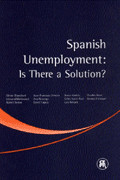Studies in this week’s Hutchins Roundup find that raising student loan caps increases student debt but also leads to better post-college outcomes, eliminating or reducing unemployment benefits will reduce local consumer spending, and more.
Want to receive the Hutchins Roundup as an email? Sign up here to get it in your inbox every Thursday.
Higher student debt is associated with better post-college outcomes
Although conventional wisdom suggests that students are taking on too much debt, Sandra E. Black from Columbia and co-authors find that increased student borrowing leads to higher rates of college attendance and graduation and less loan default, suggesting that students are under-borrowing. The authors use data on Texas college students’ loans, educational outcomes, and earnings, and national consumer credit reports to compare the student cohorts before and after the 2007-08 and 2008-09 academic years, when Congress nearly doubled the cap on certain federal loans. They find that a $1000 increase in loan limits for credit-constrained students resulted in a higher likelihood of bachelor’s degree completion, lower likelihood of employment during the first two years of college, 4 to 6 percent higher earnings 6 to 8 years after the first year of college, 0.9 percentage points fewer loan delinquencies, and 1.1 percentage points fewer loan defaults. Moreover, higher levels of student debt had almost no effect on home or car ownership. The authors conclude that when students borrow more and spend less time working, they can accumulate more human capital, leading to better outcomes despite more student debt.
Unemployment insurance reductions will decrease local spending
What will happen to consumer spending if the extra $600 a week in unemployment benefits provided by the federal government from April until the end of July is not extended? Using data on Illinois unemployment claimants’ earnings and benefits, and transaction-level data on credit and debit card purchases county-by-county, Miguel Garza Casado from the University of Pennsylvania and co-authors estimate that eliminating the $600 supplement altogether would lead to a 44% decline in local spending. If the supplement is reduced to $200, spending would fall by 28%. If it is reduced to $400, spending would fall by 12%.
Inflation is affecting the service sector more than the goods sector
Despite a decade-long expansion following the Great Recession and impressively low unemployment rates, the U.S. economy did not see rising inflation. Authors Sebastiane Heise and Fatih Karahan at the Federal Reserve Bank of New York and Ayşegül Şahin at the University of Texas at Austin argue that this is because the prices of goods are increasingly disconnected from wage growth. Using the Producer Price Index and Quarterly Census of Employment and Wages at the industry level, they find that a 10% increase in labor costs is associated with a 1% increase in service prices but has essentially no effect on the prices of goods. To explain this development, they argue that in the manufacturing sector, increasing globalization forces firms to cut into their markup in response to wage increases rather than raise prices and become uncompetitive with foreign firms. Compounding the effect, when foreign firms enter the market, smaller businesses are more likely to exit, consolidating the market over time. Larger U.S. firms can charge relatively higher markups, which then allows them to absorb wage changes more easily without increasing prices. They conclude that prices in the goods sector will continue to be independent from unemployment and other traditional economic indicators.
Chart of the week: Change in payrolls by sector
Quote of the week:
“There are a number of reasons why activity is unlikely to bounce back completely after lockdowns end. Firstly, some activity restrictions usually remain even after the most stringent lockdown measures are lifted. Secondly, some people continue to engage in some social distancing beyond what is mandated. Thirdly, and probably most importantly, the deficiency in demand and a general increase in uncertainty induces people and firms to be more cautious in their spending decisions. So, demand remains weak for some time. This lingering effect of the pandemic on uncertainty and demand means that, beyond the first couple of months, recoveries will be protracted and uneven. It will take time to get back to the level of global GDP prevailing before the pandemic,” says Luci Ellis, Assistant Governor at the Reserve Bank of Australia.










Commentary
Hutchins Roundup: Student debt, consumer spending, and more
August 12, 2020